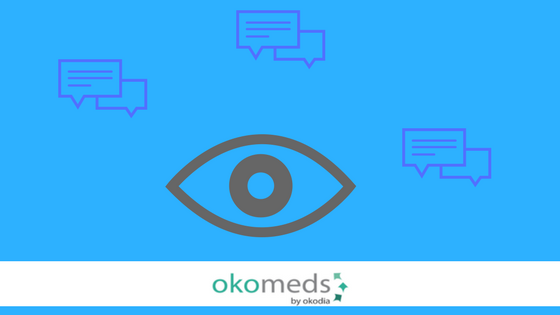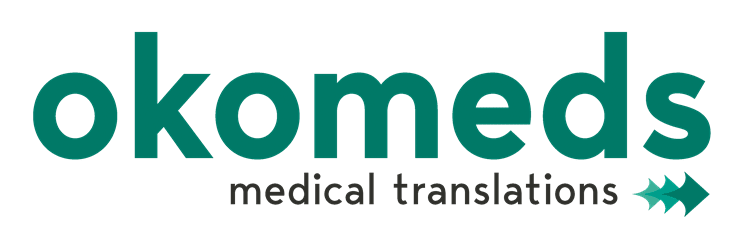
27 Aug How do you see the ophthalmological translation?
How much are medicine and translation related? The answer is clear: they are both closely linked. If you are still doubting about this, here are some facts reinforcing the idea that eyes and ophthalmological translation are highly connected. Suffice it to say that Ophthalmological translation may be applied in issues related to treatments, preventions and diseases. And it is very important in each and any aspect. Here are some examples.
Treatments and surgery
Any king of eye treatment, from glasses to surgery, can be subject to ophthalmological translation.
One of the most frequent ophthalmological surgeries and one of the most commonly performed surgical procedures in the world, is the cataract surgery, as there is no alternative treatment for this visual problem.
This type of surgery is a procedure performed to remove a cloudy lens from the eye, which is usually replaced by an intraocular, implanted during the surgery. Among other causes, the simple aging process is one of the causes of this kind of ophthalmological problem.
But dealing with cataracts requires some precautions and ophthalmological translation brings ophthalmologists the state of the art. For example, cataract surgery is never performed on both eyes at the same time. Eyes are too important to risk blindness.
On the other hand, cataracts can mask additional eye problems, like retinal damage. In these cases, the outcome of cataract surgery will depend on the evolution of the additional problems.
There is also scientific proof that cataract surgery can contribute to the progression of ARMD or Age Related Macular Degeneration. In this cases if the patient chooses cataract surgery, the surgeon should shield the retina against bright light and install an intraocular lens that is capable of absorbing ultraviolet and bluelight,
In their duty to keep with the state of the art, ophthalmologists, must know, using if needed ophtalmological translation, that the cataract surgery can also be combined with other surgeries. In this sense, it is possible to treat other visual problems, such as myopia, hyperopia, presbyopia and astigmatism in the same cataract surgery, so that patients can not only improve but obtain a good level of vision.
Even according to research done in the early 2000’ in France and its ophtalmological translation, cataract surgery can be combined with nonpenetrating glaucoma surgery.
The extraction of the lens, depending on the type of cataract, can be done by extracapsular extraction or laser surgery, but the most common form of cataract surgery applies phacoemulsification. No type of hospitalization is required.
Perhaps in the future, cataracts will still have a simpler remedy, since scientists work on ophthalmic drops to dissolve cataracts.
Any ophthalmologist professional must always read different documentation, from a glass treatment to a laser procedure. They all are really important. And, it is much better to have such documentation translated into the mother tongue of the doctor than in the original – if different. So, the need of a pertinent ophthalmological translation can ease the job of the professionals and benefit the eyes of the patients.
Did you know it is possible to treat other visual problems, such as myopia, hyperopia, presbyopia, astigmatism and even some types of glaucoma in the cataract surgery?
Preventions and aftercare
Any information is always better understood in a mother tongue. That is to say, any ophthalmological campaign with medical advice for eyes will be better addressed to patients in their own language. So any document, from flyers to dossiers, is highly recommended to be translated. In other words, a medical translation is essential for effectiveness. By easing communication, patients will know the answers to questions as: how should I clean my eyes? What should I do in case of bleach contact with my eyes? Which quality considerations should I take into account when buying sunglasses?
Peventions also include pre-operation eye examination, that might include ultrasound analysis and measure of the eye curvature, as well as physical examination, to avoid any kind of surprise or problem during a surgery. In addition, patients start before any kind of surgery or intervention a course of antibiotic eye drops or ointment.
Proper post-operative care is very important after any eye surgery. This includes antibiotic and inflammatory medication, glasses, aid for transport or some kinds of movements, as the patient must not bend over or do anything strenuous for a while. And a ophthalmologist follow up to minimize further complications.
Diseases
All that might be related to an eye disease is subject to be carefully analysed. For example, clinical reports are generally written in English, but a pertinent ophthalmological translation may enable a better understanding of its information. Additionally, drugs and different medicaments must – by law – be sold with an ophthalmological translation into the official language of each country. So, thanks to ophthalmological translation you can use eye drops in a safer way.
Ophthalmological translation assumes a key role for improving the eye quality.







No Comments